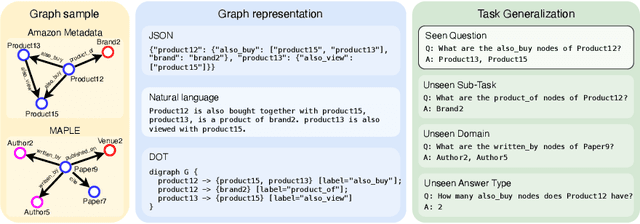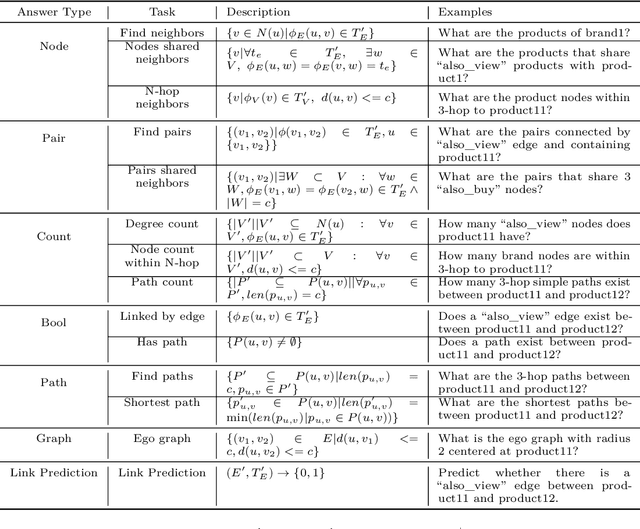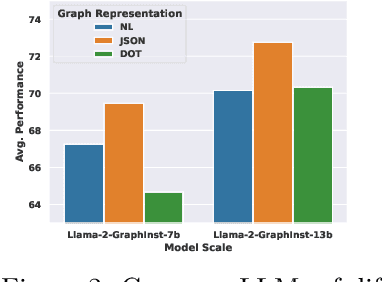Kevin Chang
Investigating Instruction Tuning Large Language Models on Graphs
Aug 10, 2024



Abstract:Inspired by the recent advancements of Large Language Models (LLMs) in NLP tasks, there's growing interest in applying LLMs to graph-related tasks. This study delves into the capabilities of instruction-following LLMs for engaging with real-world graphs, aiming to offer empirical insights into how LLMs can effectively interact with graphs and generalize across graph tasks. We begin by constructing a dataset designed for instruction tuning, which comprises a diverse collection of 79 graph-related tasks from academic and e-commerce domains, featuring 44,240 training instances and 18,960 test samples. Utilizing this benchmark, our initial investigation focuses on identifying the optimal graph representation that serves as a conduit for LLMs to understand complex graph structures. Our findings indicate that JSON format for graph representation consistently outperforms natural language and code formats across various LLMs and graph types. Furthermore, we examine the key factors that influence the generalization abilities of instruction-tuned LLMs by evaluating their performance on both in-domain and out-of-domain graph tasks.
Exact and Cost-Effective Automated Transformation of Neural Network Controllers to Decision Tree Controllers
Apr 11, 2023Abstract:Over the past decade, neural network (NN)-based controllers have demonstrated remarkable efficacy in a variety of decision-making tasks. However, their black-box nature and the risk of unexpected behaviors and surprising results pose a challenge to their deployment in real-world systems with strong guarantees of correctness and safety. We address these limitations by investigating the transformation of NN-based controllers into equivalent soft decision tree (SDT)-based controllers and its impact on verifiability. Differently from previous approaches, we focus on discrete-output NN controllers including rectified linear unit (ReLU) activation functions as well as argmax operations. We then devise an exact but cost-effective transformation algorithm, in that it can automatically prune redundant branches. We evaluate our approach using two benchmarks from the OpenAI Gym environment. Our results indicate that the SDT transformation can benefit formal verification, showing runtime improvements of up to 21x and 2x for MountainCar-v0 and CartPole-v0, respectively.
 Add to Chrome
Add to Chrome Add to Firefox
Add to Firefox Add to Edge
Add to Edge